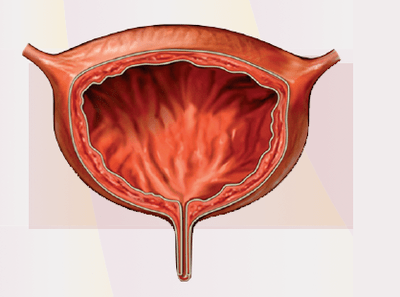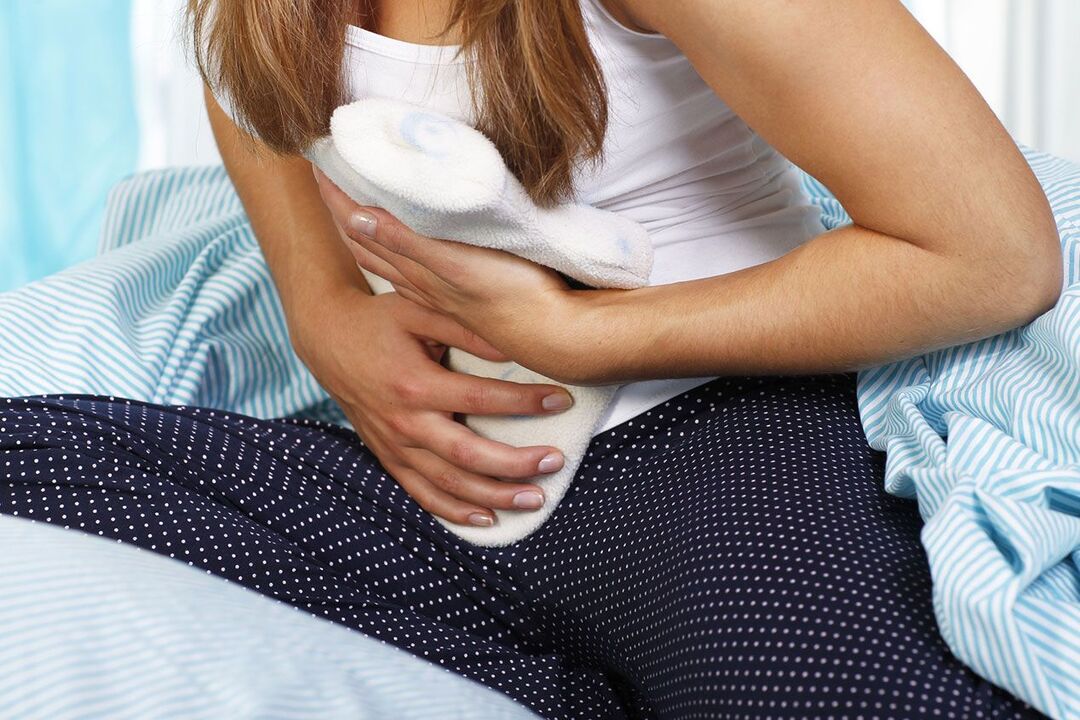Cystitis is an inflammation of the bladder wall. It is characterized by rapid (every 15-20 minutes), with a small portion of urination violently and sometimes with blood, subrelease body temperature. The transition from disease to chronic forms, the rise of infection, the development of inflammatory processes in the kidneys, and the decrease of urea. When cystitis is diagnosed, the results of urine analysis and bladder ultrasound help the urologist. To determine the cause of cystitis, bacterial seeding of urine and urethral smears were performed. Cystitis treatment mainly means effective drug effect on the infectious drugs that cause it.
General information
Cystitis is an inflammation of the bladder mucosa. In most cases, cystitis is infectious. The disease is broad and affects weak and stronger representations, but is more common in women due to certain anatomical features of the female body structure.
The urethra of a woman (urethra) is wider and shorter than that of a man, so it is easier for a pathogen to penetrate the bladder. This determines that women have higher frequency of cystitis. In most cases, women of childbearing age suffer from cystitis. Cystitis often occurs repeatedly, which significantly worsens her quality of life.
Usually, cystitis is caused by conditionally pathogenic plant stems, intestinal streptococci, streptococci, staphylococci, etc. Sometimes, cystitis is caused by infecting sexually transmitted diseases - pathogens that accompany sexual tumors.

Symptoms of cystitis
The most characteristic symptom of cystitis is urine pain, accompanied by residual sensation of burning and friction. In addition, patients with cystitis are disturbed by lower abdominal pain and the empty bladder is incomplete. Sometimes, urinary incontinence occurs due to cystitis, which manifests as a strong desire to urinate.
Urine with cystitis can become muddy or obtain a red hue due to impurities in red blood cells. The temperature sometimes rises to 37. 5 degrees. Increased temperature of cystitis can indicate possible kidney disease, so in this case, it is urgent to apply for qualified medical services.
Prevalence of cystitis
Acute cystitis is one of the most common urological diseases. Most commonly, simple cystitis is found in which microorganisms affect only the mucosa, not the submucosa. According to research in the field of urology, acute cystitis drops from 26 million to 36 million per year. Meanwhile, the incidence rate in women is 500-700 episodes per 1, 000 episodes, while in men aged 21 to 50, a similar index is 6-8 cases per 1, 000 cases.
The prevalence of girls is three times that of boys. Among children aged 1-3 and 13-15, newborns and children under 1 year old are extremely rare among children under 1 year old. In most cases, cystitis occurs in children aged 4 to 12 years.
Chronic cystitis is also a wide range of urological diseases. According to the study, the population of chronic cystitis accounts for 11% to 21%. The large spread of data is due to different methods of identifying chronic cystitis. Some studies believe that if the frequency of aggravation is frequent or twice a year, chronic cystitis should be diagnosed, and other aggravation should be performed.
Summer cystitis
It is unlikely that a woman hopes that the pleasure of summer is overshadowed by an unpleasant disease like cystitis. Meanwhile, there are many causes of cystitis in the summer, especially if a woman is far away from home and falls into an unusual environment.
The most common causes of cystitis in warm seasons:
- Accommodation in new places during vacations leads to issues of compliance with sanitation rules;
- The body temperature in the body is hypothermia, which occurs due to long bathing in cold water.
- Violation of the usual urination state associated with flying, moving or in a new place (in which case women often have to endure for a long time, waiting for a convenient moment);
- Rapid changes in the climate have negatively affected immunity.
Another risk factor for the development of cystitis is sometimes the risk factor for increasing sexual activity in the context of a listed condition that is not conducive to the female body.
However, if your holiday masks the occurrence of an unpleasant disease like cystitis, you must contact your urologist urgently. To clarify the diagnosis, ultrasound of the bladder and urine analysis are necessary. Modern antibacterial drugs effectively affect cystitis, which can speed up recovery and prevent the transition from acute cystitis to chronic diseases.
Unlike previous generations of drugs that affect the entire body, modern antibiotics used to treat cystitis have no effect on the inflamed tissue of the bladder, which does not actually affect other organs and systems. The concentration of the drug only reaches its maximum in the urine and the inflamed mucosa of the bladder. This can minimize the amount of toxicity in the body to treat cystitis and improve the effectiveness of the drug.
Phototoxicity is an unpleasant side effect caused by many drugs to treat cystitis. It shows an increased sensitivity to sunlight, and redness and combustion occur even when exposed to small intensity UV rays. Development is made due to the presence of substances in drugs with the characteristics of photosensitizers and photoreactiveness. This substance causes the emergence of a large number of free radicals in the skin, which in turn leads to the destruction of skin cells, inflammation and burning.
Cystitis during pregnancy
Cystitis can develop during any pregnancy. The possibility of cystitis development increases, subject to increased uterine changes due to displacement of internal organs, hormonal background and hemodynamic changes. The influence of these factors leads to incomplete emptying of the bladder, and the residual urine in the bladder is a favorable environment for bacterial development.
In the first sign of cystitis, pregnant women should consult with the gynecologist who is pregnant and tell him about the symptoms. If necessary, the doctor will provide guidance to the patient.
Cystitis in children
However, for children of any age, developing for both old-fashioned and school-aged children, the risk of disease is increased by 5-6 times. The main reasons for frequent development of cystitis in this group of children are many factors. The girl's ovaries have not started to produce estrogen, the mucosa has low barrier properties, and the wide and short urethra allow pathogenic microorganisms to enter the bladder cavity.
In other diseases, the possibility of cystitis development increases due to reduced immunity and the formation of favorable conditions for reproduction of pathogenic microorganisms in urea. The main method to prevent cystitis in girls is to carefully observe hygiene rules.

Causes of cystitis
In 70-95% of patients with acute cystitis, the cause of the disease became Eatherball Vand, and in 5-20% of patients, Staphylococcus was found, and the rest was Proe or Klebsell as pathogens. Typically, cystitis is caused by a representative of conditionally pathogenic bacteria. As cystitis develops, Gram-negative bacteria often become the cause of the disease due to instrumental or surgical interventions. Studies have confirmed that the pathogens of cystitis can be not only bacteria, but also viruses, mycoplasma, caterpillar, chlamydia and various fungi.
The widespread prevalence of cystitis in women is caused by the low length and large gap of the urethra and its location relative to other organs. Unlike men, the female urethra is close to the anus. The anatomical features and topography of the female body help pathogens enter the urethra, migrate to the bladder and the development of cystitis.
In men, cystitis rarely develops. The causes of cystitis in men usually become inflammation of the urethra, prostate, testicular appendages and seed bubbles. Sometimes, urethra infection occurs due to catheterization of bladder in men and women.
Men with prostate adenoma have an increased risk of cystitis during bladder catheterization, one of which is the persistent delay in urine. The risk of cystitis development also increases with the introduction of pregnant women or recently giving birth to a woman, which is due to a decrease in tone of the urinary tract.
Treatment of cystitis
Rapid cure of cystitis and complete recovery of bladder mucosa are possible, with timely treatment and medication use sufficient effectiveness. It should be emphasized that with timely diagnosis and the use of drugs tested on infected pathogens, the chances of getting rid of cystitis have increased. Later, the onset of treatment and prescription of drugs that can only eliminate symptoms of cystitis without affecting the pathogenic environment can lead to the transition of acute cystitis to chronic.
The main task facing doctors treating cystitis is to destroy pathogenic microorganisms that penetrate the bladder and cause mucosal inflammation. The choice of antibacterial cystitis treatment drugs depends on parameters such as disease duration and severity of symptoms. In addition, considering drugs, possible side effects, absorption of drugs, methods and rates of excretion, and the presence of diseases, etc.
The effectiveness of this drug in treating cystitis depends on the drug's ability to affect certain microorganisms. It should be remembered that pathogenic bacteria adapt and are not sensitive to antibiotics. Over time, the main cause of cystitis (Escherichia coli) has become resistant to these drugs. In addition, drugs for treating cystitis related to previous generation antibiotics are quite high in toxicity and cause various side effects.
When choosing a drug to treat cystitis, the cost of treatment should also be considered, depending not only on the cost of a tablet, but also on the actual effectiveness of the antibiotic, the duration of intake, and the possible risks to the patient’s health. Today, there are drugs that can be used to treat cystitis, selectively affecting the pathogens of the disease. Once inside the body, the drug is concentrated in the bladder, which allows you to increase its effectiveness. In addition, the use of the latest generation of antibiotics ensures reduced treatment of cystitis, reduces the possibility of side effects and reduces the risk to the patient.
When treating cystitis, fat and spicy foods should be excluded from the diet, increase fluid intake and avoid hypothermia. A warm heating pad placed on the lower abdomen helps with cystitis. Complex treatment of cystitis is possible using ion cords, UHF or hypnosis. We cannot forget that in the presence of certain gynecological diseases, contraindicated physical and thermal procedures are contraindicated.
Useful Tips for Preventing Cystitis:
- Try to avoid hypothermia.
- Despite this, personal hygiene rules are followed.
- For hygiene procedures, use a detergent with higher neutrality.
- During menstruation, change the sanitary gasket in time.
- Empty the bladder in time.
- Increase fluid intake.
- Clothes that are too tight can worsen blood circulation in the pelvic area, so it is best to reject such clothing.
- Try to normalize the work of the intestines. There is a tendency to constipate, and the share of fresh fruits and vegetables in the diet should be increased.
























